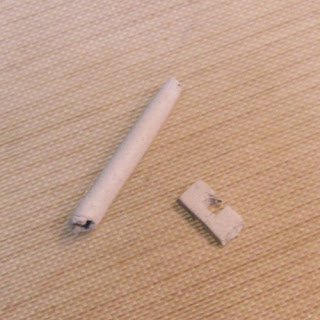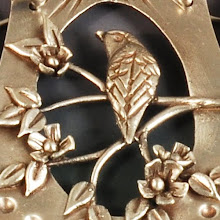One of the prime potential advantages of sterling clay is improved strength over fine silver clay. Adding copper to silver to make sterling is traditional for just this reason. While fine silver is easy to work with, it’s necessary to use more of it, to build heavier to take abuse, and generally to compensate for its inherent weakness. So trying a brooch for my first experiments with this material offers me the opportunity to test its mettle. With a fine silver brooch, I’d make the pin mechanism from another material. In the past, I’ve tried a variety of approaches: perhaps an embedded commercial sterling finding with a nickel pin stem added after finishing or a handmade forged sterling wire fibula soldered in place. With sterling clay, I wanted to try making a traditional mechanism inherently designed at the clay stage.
Both were attached to the back of the brooch, near the top to insure that the pin hangs well. After some final refining, I'll fire the piece.


























